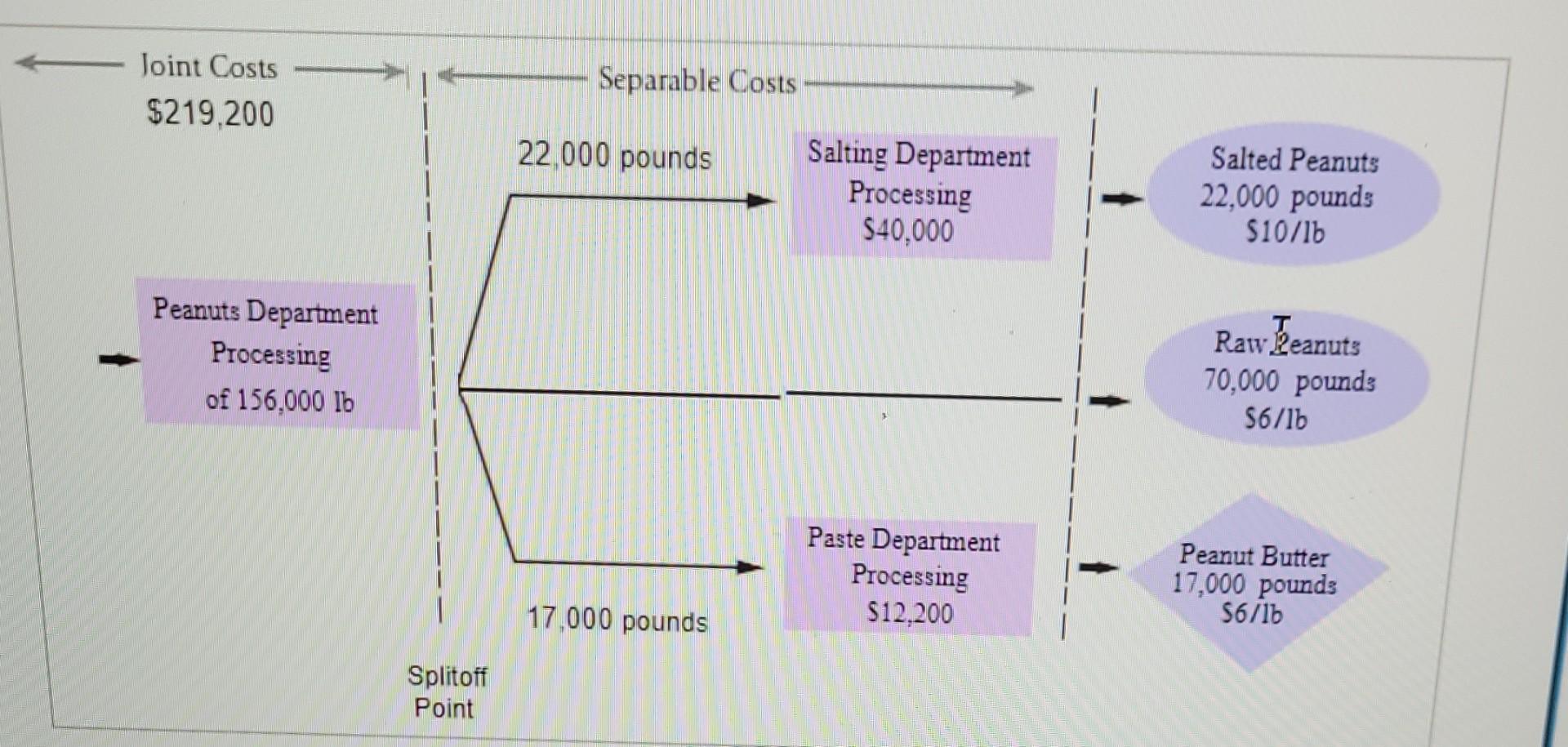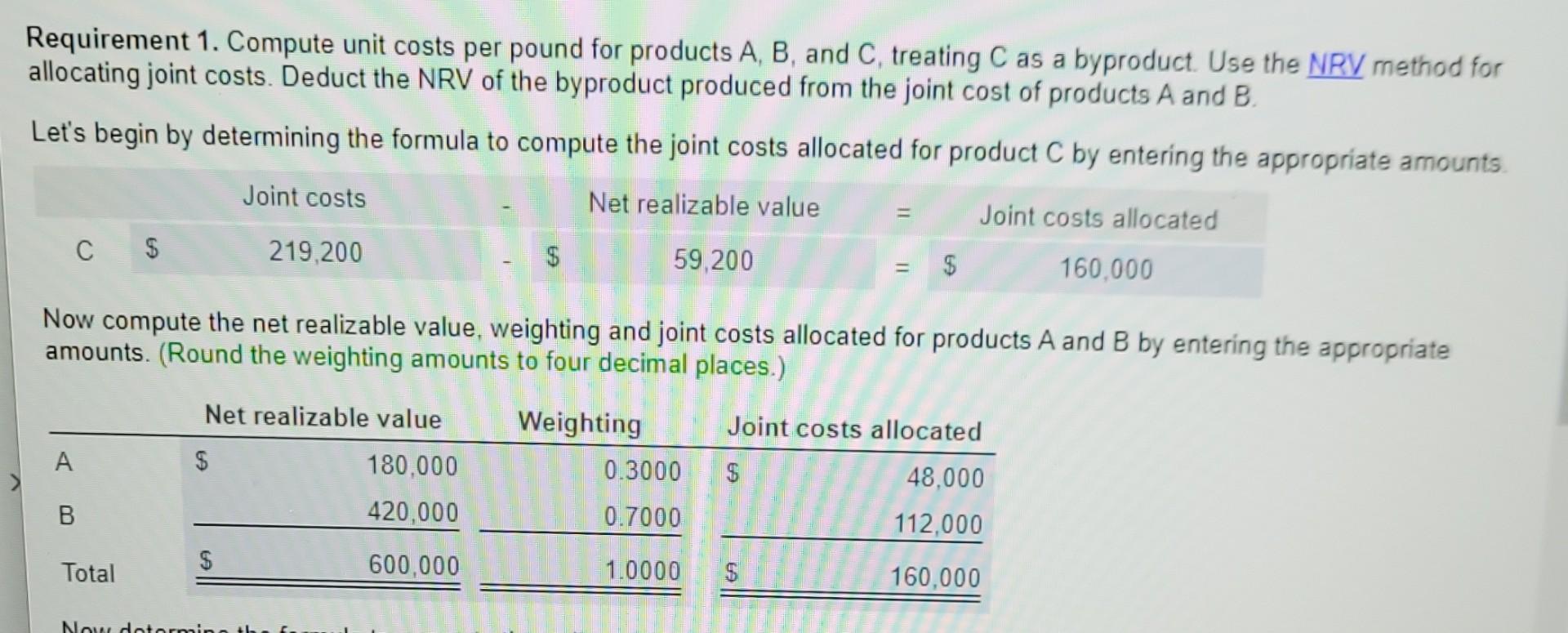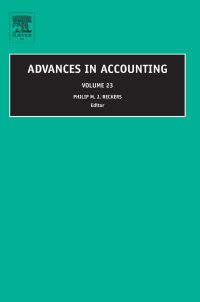not sure I keep going wrong on requirement 2 please help don't just answer. I worked it twice now and keep going wrong.






Raap, Inc., is a large food processing company. It processes 156,000 pounds of peanuts in the peanuts department at a cost of $219,200 to yield 22,000 pounds of product A, 70,000 pounds of product B, and 17.000 pounds of product C (Click the icon to view the information) .) The company wants to make a gross margin of 10% of revenues on product C and needs to allow 20% of revenues for marketing costs on product C. An overview of operations follows: (Click the icon to view the overview.) Read the requirements Joint Costs $219.200 Separable Costs 22,000 pounds Salting Department Processing $40,000 Salted Peanuts 22,000 pounds $10/16 Peanuts Department Processing of 156.000 lb Raw Zeanuts 70,000 pounds S6/1b Paste Department Processing S12.200 Peanut Butter 17,000 pounds S6/lb 1 17,000 pounds Splitoff Point Requirement 1. Compute unit costs per pound for products A, B, and C, treating C as a byproduct. Use the NRV method for allocating joint costs. Deduct the NRV of the byproduct produced from the joint cost of products A and B. Let's begin by determining the formula to compute the joint costs allocated for product C by entering the appropriate amounts Joint costs Net realizable value Joint costs allocated C $ 219,200 $ 59,200 = 160.000 Now compute the net realizable value, weighting and joint costs allocated for products A and B by entering the appropriate amounts. (Round the weighting amounts to four decimal places.) Net realizable value Weighting Joint costs allocated 0.3000 $ 48.000 A $ 180.000 B 420,000 0.7000 112,000 $ Total 600,000 1.0000 $ 160,000 Now dotormin . Now determine the formula to compute the unit cost for products A, B, and then enter the appropriate amounts. (Round your final answers to two decimal places. For amounts with a 50 balance, make sure to enter "0" in the appropriate cell.) Total costs Number of units Unit cost 88,000 A $ 22,000 11 $ 4.00 $ 112,000 B 70,000 $ 1.60 C $ 71,400 17,000 = $ 4.20 Requirement 2. Compute unit costs per pound for products A, B, and C, treating all three as joint products and allocating joint Requirement 2. Compute unit costs per pound for products A, B, and C, treating all three as joint products and allocating joint costs by the NRV method. Now compute the net realizable value, weighting and joint costs allocated for products A, B, and C by entering the appropriate amounts. (Round the weighting amounts to four decimal places. Round the joint costs allocated to the nearest whole dollar) Net realizable value Weighting 2687 A 180000 B 420000 6271 C 1042 69800 669800 1.0000 Total












